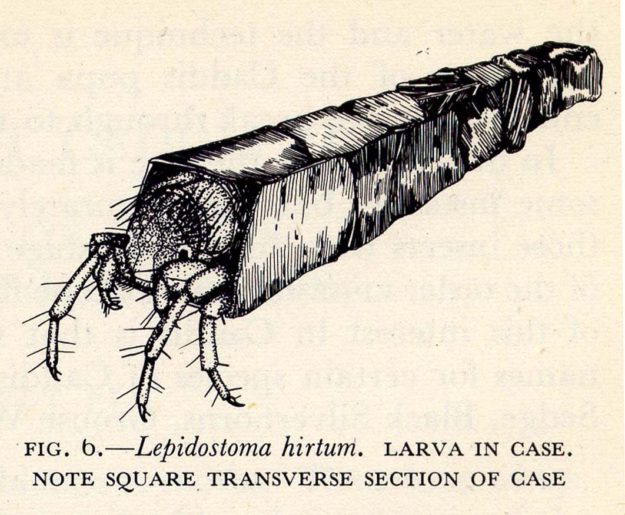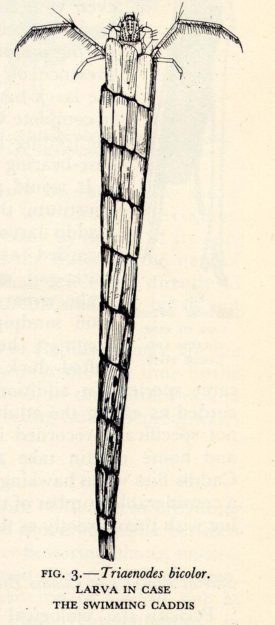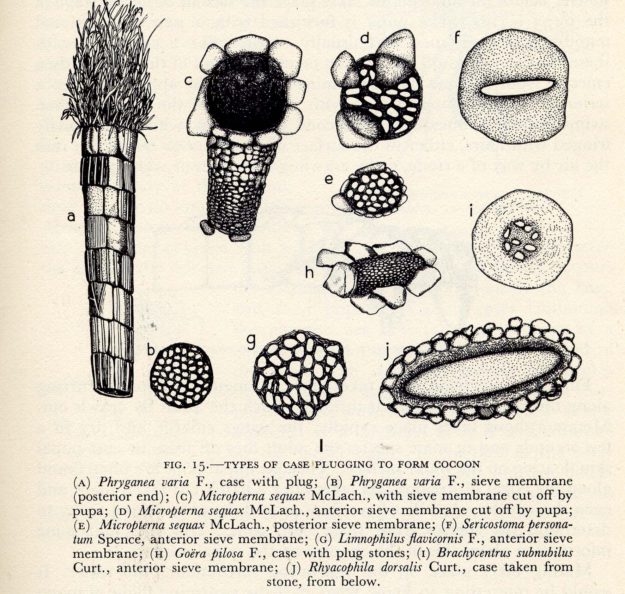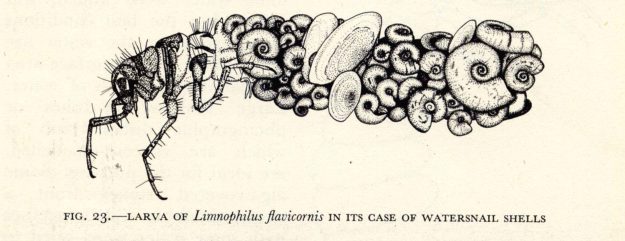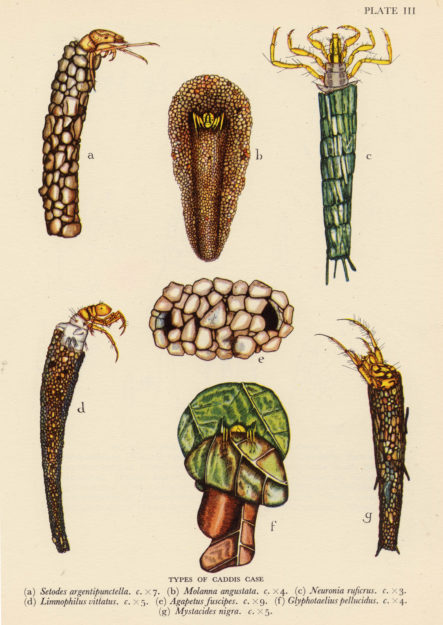Norman E. Hickin, « Biology of Caddis Flies », Water Life and Aquaria World, vol. 7, Londres, 1952, pp. 176-177.
As they grow sot hey add to the case which they pull around with them. Many of these cases are beautiful structure and are quite characteristic of the species which make them. Often they are of accurate geometrical pattern. Some are exactly square in cross section, others are made by placing pieces of stick tangentially to the inner cylindrical sac which is always made of a silk-like secretion emanating from the mouth of the grub. Yet in others the case is made of small disc-like pieces cut from leaves arranged spirally. Sand grains, circular pieces of cut leaf, vegetable debris or even snail shellls – with or without their occupant – are used in case-making by the different species of caddis grub.
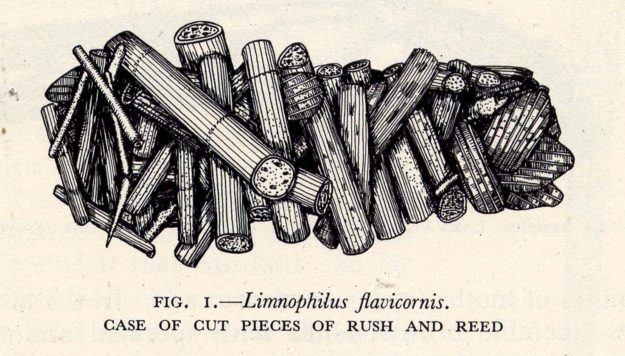
Some species of caddis are often exceedingly common in certain freshwater habitats and sometimes cause considerable changes by feeding on various materials and they in turn are eagerly devoured by several sort of fish such as trout and eels. It is important therefore, that freshwater investigators and other biological research workers should be able to know the different sorts of caddis by their inmature forms, this is useful when stomach contents of fish are being examined.

